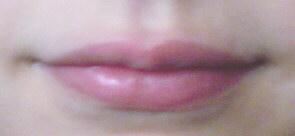 |
| NASA researchers conducting tests on aircraft engine noise in 1967
As we think about what kind of spaces where we will work with kids, I am thinking about the different qualities of sound. This year, the classroom where I volunteer shares a wall with a special needs classroom. Although sometimes shouts and other sounds come through the wall, the children I work with have become used to the sounds for the most part. I think they have gained some comfort with this proximity to these sounds through visiting the class at times and doing activities with both classes together. The special needs kids and "gen ed" kids know each other to some extent, which is good for everybody.
When I have had students who will be using their voices in performance, I do different listening experiments with them. I have them say words or phrases in different ways and at different volumes. Then I have them start listening to "negative space,"i.e., what it sounds like immediately after making a sound. Of course, there are echoes and ambient noise that most kids would not have noticed previously. But there are also subtleties in the transitions from noise to noise, or noise to "silence." For example, some kids experience the silence following a loud sound as spreading outward from a central point in the room, filling the room. I have kids think about these things for several reasons. There is so much to be learned by noticing your surroundings while engaging with your senses. We can also connect emotions to sound. When possible, I start a project with a quiet activity like painting, and I play music that is meditative but also has steady energy. Later we talk about how they felt during the activity, and why they think they were affected that way by the activity and the music.
Because children's lives are so full of noise and stimulation, we can also bring that into the discussion. How do they feel the moment after they have ended a video game? How do they feel when they are riding in a car? What ambient sounds are in their homes? Are there any sounds in their lives that will be memorable and emotional for them when they are adults? What's the quietest place they've ever been? (Mine is in a shop that sells all kinds of foam, located in the U-District. I challenge anyone to beat this example for silence.) What is the noisiest place they've ever been? I might ask them that next time they're in a quiet or noisy setting, to try to hear as many individual sounds within it as they can.
I feel these kinds of exercises help kids feel more connected to the places where they work, play and perform, and they enrich their experience when they are in these places. In the Choices, Choices, Choices blog post, she describes the benefits to kids of being able to chose where to work in their classroom. I can picture including small, one-person or two-person sitting "nests," making them out of foam with three walls to surround the student(s). The reason it would be small is that the noise-absorbing foam would be pretty close to the ears of whoever was in the pod, and I bet it would be noticeably quieter than the rest of the room. It would be nice to let kids experiment in making such spots to be in, also.
|
Tuesday, May 28, 2013
Listening for silence
Sunday, May 19, 2013
Friends of the brave self-conscious
Once again I feel so lucky about the quality of our
certification program and the people involved with it. When we read our “I am”
poems, it reminded me of when I’ve had students perform in front of (sometimes
large groups of) people.
 Performing is very powerful, and creates the possibility for
deep personal experience. I’ve been so proud of my students, and felt honored
that they have taken a risk in my class and moved through the vulnerability of
being seen and heard by an audience. There was something that we did that made
it easier for them.
Performing is very powerful, and creates the possibility for
deep personal experience. I’ve been so proud of my students, and felt honored
that they have taken a risk in my class and moved through the vulnerability of
being seen and heard by an audience. There was something that we did that made
it easier for them.
Before the beginning of a performance, when the audience is
assembled and we’re ready to start, I get my students on stage and ask them
what they would like to ask for from the audience. We talk about this together
beforehand, so they come up with about three or four things. They often ask for
the audience to understand that they worked hard on their performance, but are
a little nervous, to pay close attention during the performance, and to enjoy
the performance.
Then I ask the audience what they would like to ask of the
performers. They always ALWAYS ask my students to relax and enjoy performing,
and sometimes say they understand what it’s like to be nervous too. We keep it
really short, but it has been extremely helpful.
Saturday, May 18, 2013
Brent Hartinger on LGBT issues and students
Brent Hartinger on LGBT issues and students
[Hi, Cohort: Here is an email from a friend whose wonderfulness will be evident if you read this email.]
Hi Lynn:
Thanks again for asking me to do this. So important! Here are some thoughts.
My name is Brent Hartinger, and I've been a friend of Lynn's for years (she's married to my best friend since kindergarten!).
In 1990, in my hometown of Tacoma, I helped found a gay teen support group called Oasis, which turned out to be one of the first gay teen support groups in the whole country. We didn't know that at the time -- different people in different cities just happened to start doing the same thing at about the same time -- but it was exciting to finally realize we were at the start of a great movement. And boy, has it snowballed since then!Thanks again for asking me to do this. So important! Here are some thoughts.
My name is Brent Hartinger, and I've been a friend of Lynn's for years (she's married to my best friend since kindergarten!).
There's this really scary thing that goes on even today, where people seem to think the mere mention of gay people is somehow "controversial," especially in schools. Looking back on my own teen years, I call it a "conspiracy of silence." I know now there were gay people all around me, that most gay people weren't like what I had seen on TV, but no one ever told me that. By staying silent, those adults were lying to me.
And the thing is, it's not like my fellow students were silent. They talked about gay people all the time! They just didn't know what they were talking about. So I got a whole lot of wrong information.
This is a fact: some people are gay (or bisexual or transgender); some people have same-sex parents; and some people have friends and family members who are gay.
And every kid, whether they know gay people or not, has questions.
Again, if you don't ever mention LGBT people in the classroom, you're still teaching a very powerful lesson that every kid in your class will pick up on and learn. It will just happen to be very wrong.
LGBT kids who conform to some of the stereotypes have one set of issues -- namely, that everyone thinks they're gay, and sometimes that there's something "wrong" with being a more feminine boy or a more masculine girl. Kids who don't conform to the stereotypes have a different set off issues -- namely, that everyone assumes they're straight and they'll be treated differently if people find out the truth.
And then, of course, there are all those kids who display gay stereotypes who happen to be straight, and other kids who are the kids of same-sex parents.
(3) Even today, there's still a fair bit of pain for kids involving LGBT issues.
Since I started publishing gay teen novels in 2003, I've received literally thousands of emails from LGBT kids (and also straight ones). And frequently the LGBT kids say the same thing: they feel alone; they don't feel safe around their friends and family; they don't feel they have anyone they can talk to, anyone who accepts them for who they are.
As a teacher, you can have enormous influence over these kids simply by listening to what they have to say, and accepting them for who they are. But if you can't do this, if this violates your personal political or religious beliefs, I'd encourage you to refer the student to someone who is more comfortable with these issues.
I've said this many times: if people could read my email for one month, all anti-gay prejudice would immediately disappear. These are some fantastic kids, and it breaks my heart to see their hearts so often getting broken. In my opinion, there's just no reason for it.
I've said this many times: if people could read my email for one month, all anti-gay prejudice would immediately disappear. These are some fantastic kids, and it breaks my heart to see their hearts so often getting broken. In my opinion, there's just no reason for it.
Anyway, I hope I said something helpful here. Hit me up if you any specific questions! Oh, and feel free to read one of my books or two...
The power of indifference
To let all of the information we're coming across
in our readings resettle in my head, I'm finding a need to immerse myself in
the words of people's stories and experiences, the smaller the better. Three
resources that have been helpful to me are Vivian Paley's book White Teacher, the microaggressions
blog (http://www.microaggressions.com/about/), and Widening the Circle by Mara Sapon-Shevin.
Reading around in other non-assigned resources
seems to help me sort out my thoughts and feelings in a different, looser way.
I'm reading with no goal, and it's like mulling things over with honest
friends.
The microaggression blog
describes the damage that can be done by "slights," little comments
that are not the most agregious slurs, so might not seem all that harmful:
"Each
event, observation and experience posted is not necessarily particularly
striking in and of themselves. Often, they are never meant to hurt – acts done
with little conscious awareness of their meanings and effects. Instead, their
slow accumulation during a childhood and over a lifetime is in part what
defines a marginalized experience, making explanation and communication with
someone who does not share this identity particularly difficult."
People will misstep in the things they say, of course, but I think it is a person's not caring that their words have hurt someone that is the problem. "Political correctness" has a negative connotation, implying that people are thin-skinned and too quick to take offense. But I think we really need to care about the effect our words and actions have on other people - it seems like basic good manners, really. We don't need to fall on our swords for offending someone, but this kind of situation is a chance to practice getting better about talking about this stuff, and it's the right thing to do.
More later on Widening the Circle by Mara Sapon-Shevin, it's a wonderful book.
Subscribe to:
Posts (Atom)

